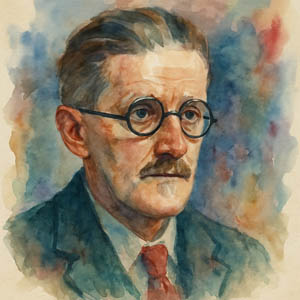 Dublin-born writer James Joyce (1882–1941) modeled his 700-page novel Ulysses on Homer’s epic and created the revolutionary style of “interior monologue” using stream-of-consciousness narration.
Dublin-born writer James Joyce (1882–1941) modeled his 700-page novel Ulysses on Homer’s epic and created the revolutionary style of “interior monologue” using stream-of-consciousness narration.
"The now, the here, through which all future plunges to the past," he wrote. Ulysses unfolds one ordinary day in the life of Leopold Bloom, exploring inner and outer worlds with radical detail.
"I’ve put in so many enigmas and puzzles," Joyce admitted. "It will keep the professors busy for centuries arguing over what I meant, and that’s the only way of insuring one’s immortality."
Joyce handwrote all his books, preferring black pencils from Smith’s in Paris and colored pencils to differentiate revisions. He refused to use a typewriter.
"All fiction," he said, "is autobiographical fantasy."
Published in 1922, Ulysses was banned in the U.S. and U.K. for 12 years for its raw, explicit content. Yet it was smuggled and celebrated, launching Joyce to global literary fame.
Because of his linguistic brilliance, Joyce remains one of the most influential novelists of the 20th century. George Orwell once remarked, “Joyce is a poet and also an elephantine pedant.”
James Joyce showed us that the heart thinks in symbols, sounds, and soul. His stories weren’t meant to be understood at once — they were meant to be felt. May we all walk through our own portals of discovery, bold enough to make mistakes... and brave enough to turn them into meaning.
 Celebrate each portal of discovery. ✨
Celebrate each portal of discovery. ✨
